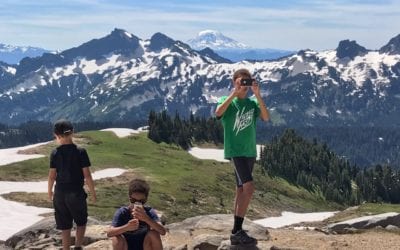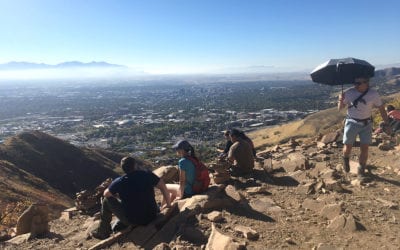Photo credit: Steven Kamenar
Community and Fire Ecologists, Park Biologists, and Recreation Scientists: The Antecedents of Wilderness Science
Science & Research
December 2019 | Volume 25, Number 3
In the United States, the management objectives for designated wilderness were not codified in law until passage of the Wilderness Act in 1964. Consequently, wilderness science, in the strict sense of science undertaken to understand, protect and effectively manage the lands of the National Wilderness Preservation System, dates from about that time. Nevertheless, prior to the 1960s, there were scientists interested in and studying lands with relatively undisturbed, natural ecosystems, the ecological processes that operate there, and the visitors who recreate there. Many of these places were eventually designated as wilderness, national parks, and other types of protected area. Although these scientists would not have thought of themselves as wilderness scientists, the work they did contributed substantially to our knowledge of wilderness ecosystems and how they might be protected and managed. This article explores some of the scientists and research themes that were antecedent to those scientists who pioneered the emerging field of wilderness science.
Community Ecologists: Henry Cowles and the University of Chicago
Early ecologists in the United States contributed substantially to both information about and protection of natural ecosystems. One of the most influential was Henry Chandler Cowles, who trained at the University of Chicago under John Merle Coulter. Coulter was familiar with the vegetation of wildlands, having served as botanist to F. V. Hayden’s geological survey of the Yellowstone region in 1872. In 1899, Cowles finished a dissertation on vegetation of the sand dunes of Lake Michigan, since preserved in the Indiana Dunes National Park – widely considered the classic study of the succession of biotic communities (Cowles 1899). Although Cowles published little after 1901, he introduced European plant ecology to American students, developed perhaps the first highly influential curriculum in ecology, and introduced the concept of climax communities. At the University of Chicago, he taught and mentored students in the study of community ecology, a subject best studied in natural areas – places where the composition, structure, and function of ecosystems was little influenced by human activity and development (Mitman 1992). Consequently, Cowles’s students and their students in turn contributed much to our knowledge of natural plant and animal communities in North America.
One of Cowles’s early students, Charles C. Adams, completed the first ecological survey of what is now the wilderness of Isle Royale National Park (Adams 1908). In 1919, Adams became the first director of the Roosevelt Wildlife Forest Experiment Station in the Adirondacks. During his time there, he was an instrumental force in protection of Allegheny State Park in western New York. In 1925, Adams wrote an early critique of National Park Service (NPS) policy, concluding that the service was not fulfilling its mandate to preserve natural conditions (Adams 1925). To do so, the NPS would need to better align itself with the emerging field of ecology and develop an ecological understanding of its natural resources (Sellars 1997).
Another student of Cowles, William S. Cooper, did further work on the climax forests of Isle Royale (Cooper 1913). His studies in Glacier Bay, Alaska (Cooper 1923) – where in 1916 he established the oldest permanent plot network in postglacial areas in the world – compelled him to lead scientists to nominate it as a national monument. Cooper’s students at the University of Minnesota included Rexford Daubenmire and Henry Oosting, prolific students of natural areas and authors of community ecology textbooks. Dwight Billings, a student of Oosting’s at Duke University, made major early contributions to desert and alpine ecology. Jerry Franklin, a student of Daubenmire’s at Washington State University, coauthored a report on the natural vegetation of Oregon and Washington (Franklin and Dyrness 1969), was instrumental in establishment of natural areas in the Pacific Northwest, and wrote the chapter on wilderness ecosystems in the first textbook on wilderness management (Hendee et al. 1978).
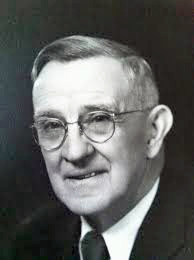
furFigure 1– Victor Shelford was an early proponent of wilderness as a means of preserving representative examples of different biotic communities. Photo courtesy of the Ecological Society of America.
Another early student of Cowles, Victor Shelford, has been referred to as the father of animal ecology (Kendeigh 1968). He was cofounder and first president of the Ecological Society of America. Shelford’s work was diverse, involving both experimentation and description, working with individual species and entire communities of plants and animals (Croker 1991). His book, The Ecology of North America (Shelford 1963), described all the biomes and major seral communities in North and Central America, reconstructing, “so far as existing remnants permit, the character of biological communities as they must have been before European invasion” (Sears 1964, p. 401). From 1917 to 1938, he chaired the Committee on the Preservation of Natural Conditions of the Ecological Society of America. In 1926, with help from other organizations and individuals, this committee prepared a detailed description of the ecology of various parts of North and Central America, natural preserves already set aside, and those being planned (Committee on the Preservation of Natural Conditions 1926).
Shelford became a strong advocate for the preservation of representative examples of all major types of biotic community in as near a natural condition as possible and was one of the first to insist that whole communities must be preserved – not just single species (Kendeigh 1968). This effort for scientific preservation of natural conditions was a complementary but different effort from those of Aldo Leopold and others to protect wilderness for its aesthetic and recreational values (Sutter 2002). But by the 1930s, the leadership of the Ecological Society of America had focused the society’s activities on basic research and removed both political and financial support from environmental advocacy and land protection. With his committee disbanded, in 1946 Shelford founded the Ecologist’s Union to continue political advocacy for natural areas. Reorganized and renamed in 1950, The Nature Conservancy has become the largest environmental nonprofit in the Americas. For these efforts, Noss (1999) considers Shelford to be among the first conservation biologists in the modern sense.
One of Shelford’s students at the University of Illinois, Charles Kendeigh, also combined advocacy for the preservation of natural areas with being a pioneering ecologist (Muller et al. 1978). He served as president of the Ecological Society of America, chairman of The Nature Conservancy, and mentor to such prominent ecologists as Eugene Odum and Robert Whittaker. Whittaker went on to conduct studies of natural vegetation patterns in such places as the Great Smoky Mountains, the Siskiyous, Santa Catalinas, and San Jacinto; to write an influential textbook on communities and ecosystems; and to mentor more students of community ecology.
Another Cowles student, Stanley Cain, founded the Department of Conservation at the University of Michigan, the first academic department of its kind. He was also a president of the Ecological Society of America and, in 1965, became the first ecologist appointed to a powerful job in the federal government, assistant director of the interior for Fish, Wildlife and Parks. In 1964, he earned the Department of Interior’s Conservation Award for his work on the Leopold Committee Report on Wildlife Management in National Parks.
National Park Biologists: George Wright and Joseph Grinnell
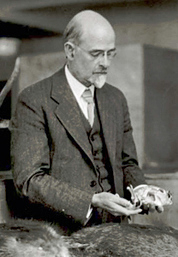
Figure 2 – Joseph Grinnell mentored many early National Park Service biologists. Photo courtesy of the Bancroft Library, University of California, Berkeley.
Of the biologists who have made major contributions to our understanding of the relatively undisturbed ecosystems typical of wilderness, it is remarkable how many can be traced to Cowles and his students at the University of Chicago. Nevertheless, important work was also being conducted elsewhere. One influential institution was the Museum of Vertebrate Zoology, established in 1908 at the University of California, Berkeley, with Joseph Grinnell as director. Grinnell was a field biologist who developed the concept of the niche and wrote numerous scientific publications as well as books, including Distribution of the Birds of California and Animal Life in the Yosemite. Grinnell’s goal for the museum was to build a collection primarily of California species, with comparative examples from outside the state. To do this, he surveyed representative sample areas of California, starting with the Colorado Desert in April 1908. His study of the Mount Whitney area, called the Whitney transect, was conducted in 1911; the San Jacinto Mountains in 1913; and from 1914 to 1920, a cross-section of the Sierra Nevada Mountains, including Yosemite, was surveyed. The Lassen Peak area was studied from 1924 to 1929. Refer to Grinnell (1940) for an engaging account of his life.
In 1916, Grinnell coauthored a paper in Science arguing for more scientific and ecological management of national parks (Grinnell and Storer 1916). He argued that national parks should be examples of pristine nature and were valuable to both science and the public. He also criticized several NPS management policies, including the predator control program. Grinnell argued, “As a rule, predaceous animals should be left unmolested and allowed to retain their primitive relation to the rest of the fauna… as their number is already kept within proper limits by the available food supply, nothing is to be gained by reducing it still further” (Grinnell and Storer 1916, p. 378). Grinnell’s ideas about resource management in national parks are perhaps best captured in one of the concluding paragraphs to a report on vertebrate animals of Point Lobos Preserve:
Administrators of parks need, we think, to convince themselves and then to help visitors in the parks learn that natural processes are capable of maintaining an area with all the desirable qualities just to the extent they are allowed to do so by not interfering with them. Artificial help is not required; indeed, it is not beneficial, but it is positively a hindrance to the natural and hence desirable expression of a truly primeval area. We cannot make such an area, but we may so treat land by bona fide protection that its primeval qualities come to predominate. Again, we need to make no special plans for the benefit of the animals, the plants, or the rocks. What we need to do is to conduct ourselves in such a manner that these objects may exist according to normal process on a long-time schedule. (Grinnell and Linsdale 1936, p. 16)

igure 3 – George Wright, Ben Thompson, and Joe Dixon, shown here around 1930, were the first biologists to survey the fauna of the national parks and make wildlife management recommendations. Photo courtesy of National Park Service.
Although Grinnell’s ideas were initially resisted by the NPS (Sellars 1997), Grinnell had a profound impact on a number of students who went on to conduct biological work there. In 1914, at the University of California, Berkeley, he developed a new course, Natural History of the Vertebrates, which is still offered to this day. The most influential of Grinnell’s vertebrate zoology students was George Wright, who spent the summer of 1926 collecting birds and mammals and doing life history studies in Mount McKinley National Park (Thompson 1987). Wright joined the NPS in 1927 and was assigned to work as a naturalist in Yosemite National Park. Independently wealthy, Wright proposed establishment of a wildlife survey program within the NPS that he would personally fund. Wight’s proposal was accepted, and wildlife survey work began in the summer of 1930, from an office in Berkeley near the University of California campus. The science staff consisted of Wright and two more former students of Grinnell, Ben Thompson and Joseph Dixon. Their stated purpose was as follows: “In addition to treating of the vertebrate natural history of the parks still needing basic surveys, (it) will cover research in one branch of science that is the very foundation on which the National Park Service is built, namely the preservation of native values of wilderness life. For it is this ideal above all else which differentiates this service from its sister services in government” (Wright et al. 1933, p. iv).
In 1933, results of the first in a series of proposed studies were published under the title Fauna of the National Parks of the United States: A Preliminary Survey of Faunal Relations in National Parks (referred to as Fauna 1). Beyond reporting on the status of large mammals in major national parks, the document provided a vision for natural resource management policies that departed greatly from traditional policy. Expanding on some of the principles of Grinnell and Storer (1916), the report argued that the NPS should “perpetuate existing natural conditions and, where necessary and feasible, to restore park fauna to a pristine state” (Sellars 1997, p. 96). It explored the tension between perpetuating natural conditions and providing for public use, suggesting the need to restore disturbed habitat and populations and minimize disturbance caused by development of infrastructure. It recommended that natural resource management be based on scientific research and “each species should be left to carry on its struggle for existence unaided, unless threatened with extinction in a park” and offered specific recommendations regarding “protection of predators, artificial feeding of threatened ungulates, preservation of ungulate range, removal of exotic species and restoration of extirpated native species” (Sellars 1997, p. 98).
The work and capacity of the biological survey group expanded slowly but steadily. The staff moved into offices on the University of California campus and, in 1932, was formally established as a Wildlife Division within the NPS’s Branch of Research and Education, with George Wright as division chief. By that time, it was largely financed as a function of the NPS (Sumner 1983). In 1935, a second volume of the Fauna series was published, Wildlife Management in the National Parks, a progress report on improved wildlife administration in the national parks. That year, George Wright was moved to Washington, D.C., where he could be more effective in promoting national parks as wildlife sanctuaries. But the NPS’s wildlife biology program was dealt a serious blow in 1936, when George Wright tragically died in a car accident.
While George Wright’s death caused the Wildlife Division to lose the momentum it was building, many projects in the works continued to completion. By 1937, administrative policies in Yellowstone National Park increasingly asserted the need for coyote control to protect other wildlife species. In response, Wildlife Division scientist Adolph Murie was sent to study the park’s ecological situation. Murie’s (1940) Fauna 4 report, Ecology of the Coyote in the Yellowstone, a seminal study of wildlife management, upheld the policy of protecting predators in parks (Sumner 1983). Similarly, in response to a bill to require wolf control in Mt. McKinley National Park, Murie was dispatched there. His Fauna 5 report (Murie 1944), The Wolves of Mount McKinley, was effective in reducing pressure for wolf control (Sumner 1983).
After Fauna 5 and the start of World War II, the biological program of the NPS declined dramatically. The Fauna series was not continued until the publication of The Bighorns of Death Valley in 1961 (Welles and Welles 1961). However, during the latter half of the 1930s, the biological staff, largely funded by the Civilian Conservation Corps, reached a high of 27 biologists, who spent about half their time reviewing proposals for development and half their time working on wildlife management issues and doing research (Sumner 1983).
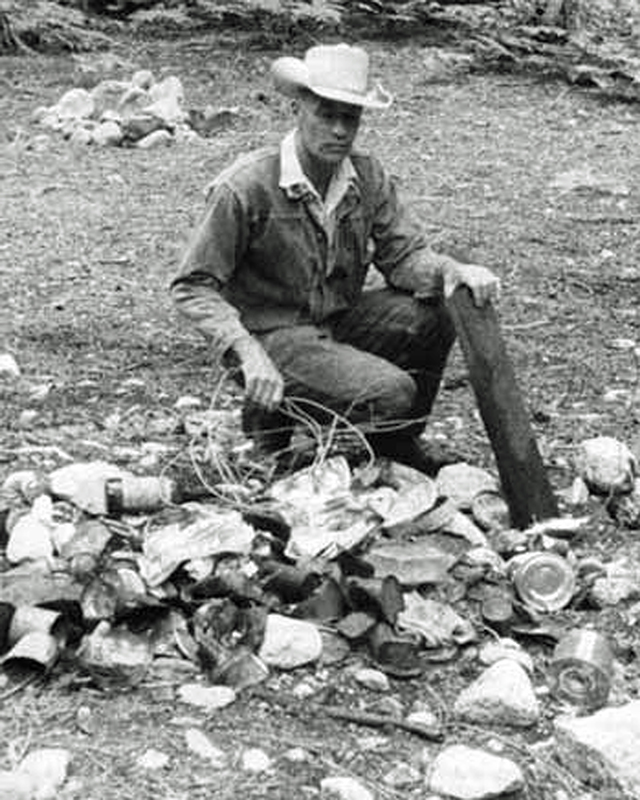
Figure 4 – Lowell Sumner was a long-serving NPS biologist who wrote about the need to manage recreation use to avoid impairment, particularly in the backcountry. Photo courtesy of National Park Service.
Of those biologists, one who substantially influenced wilderness science was Lowell Sumner, another mentee of Joseph Grinnell. Sumner joined the NPS in 1935 as a research and management biologist in San Francisco, where among other things he began a series of studies in the parks of the Sierra Nevada. Sumner became a frequent critic of development, particularly of roads in parks, “expressing concern that true wilderness in the parks would soon vanish if the Service did not halt development” (Sellars 1997, p. 105). He was concerned about the impacts of wilderness recreation use, reporting on degradation of mountain meadows caused by pack stock use (Sumner and Leonard 1947). His concern for overuse and impact led him to what is considered the first articulation of the recreational carrying capacity concept. In a 1938 paper, Losing the Wilderness Which We Set Out to Preserve, he warned about exceeding the “recreational saturation point” in parks. He expressed concern about recreation impacting even minute soil organisms that maintain porosity and nutrients, illustrating that park biologists “had moved well beyond management’s traditional preoccupation with scenic landscapes and large mammals” (Sellars 1997, p. 105). Sumner’s work on pack stock impact on meadows and the impacts of recreation congestion were among the first to make it clear that, even in wilderness, recreation impacts were a concern. This had a tremendous effect on the subsequent development of wilderness visitor management programs.
Fire Ecologists
The third group of scientists whose work had a substantial impact on wilderness stewardship were the fire ecologists. For much of the 20th century, most fire science had been concerned with improving the effectiveness of efforts to suppress fires. The work of these scientists and the managers who used their findings was highly successful, particularly given that it is impossible to suppress all fires. Indeed, as the success of suppression efforts increased, so did the difficulty of managing fire through suppression. This irony, the fact that fire management would require more than suppression, and that fire actually played an important and valuable role in ecosystems, were conclusions arrived at by early fire ecologists.
In reviews of wilderness fire science and of fire use in the national parks, Kilgore (1987, 2007) describes the gradual evolution of fire science from an exclusive focus on fire suppression to a more balanced view in which fire is recognized to be beneficial in some situations. He gives initial credit for this change to early plant ecologists, including Cowles and students from the University of Chicago, as well as scientists in the southern United States, known as the “Dixie Pioneers.” This group, which included a forester (Chapman 1912), a botanist (Harper 1913), an animal husbandman (Greene 1931), several Forest Service (FS) scientists (Heyward and Barnette 1934), and a wildlife scientist (Stoddard 1935), showed that prescribed burning could be beneficial to longleaf pine, cattle, and quail without damaging the chemical composition of forest soils (Kilgore 1987). In 1958, the wildlife scientist Herbert Stoddard and several colleagues founded the Tall Timbers Research Station near Tallahassee, Florida. Ed Komarek, who Stoddard hired as field assistant in 1934 became director of Tall Timbers, a position he held for 21 years. Tall Timbers was the first research institution devoted to the study of fire ecology, and its annual Fire Ecology Conference, first organized by Komarek in 1962, was the primary outlet for research on the ecological effects of fire for many years (Carle 2002). As such, Komarek is one of a handful of pioneers of fire ecology and, consequently, was highly influential in changes in fire management that had profound effects on wilderness. The earliest attempt to apply these ideas in a wilderness-like environment occurred in Everglades National Park, where Robertson (1953) had studied the effects of fire in slash pine forest, work that supported management decisions to use prescribed fire to maintain pineland forest in the national park.
In the western United States, the primary advocates of a more nuanced view of fire and natural resources were Harold Weaver, a forester with the Bureau of Indian Affairs and Harold Biswell, a forestry professor who arrived at the University of California at Berkeley in 1947 (Kilgore 2007). Working in ponderosa pine forests, they concluded (1) that frequent low-intensity fires are the norm in ponderosa pine forests, (2) that fire suppression efforts have increased the risk of more extreme fires in these forests, and (3) that prescribed fire at low intensities can reduce fuel loadings and provide other ecological benefits (Weaver 1943; Biswell 1967).

Figure 5 – Harold Biswell demonstrating the use of prescribed fire in Whitaker’s forest in 1969. Photo courtesy of Bruce Kilgore, National Park Service.
Biswell was a graduate of the University of Nebraska and student of Frederic Clements, who was a contemporary of Cowles and an equally important pioneer of community ecology. At Berkeley, Biswell was a particularly enthusiastic advocate for reintroducing fire in natural systems and a highly influential mentor of a new generation of scholars and practitioners with new ideas about fire and its management. Two of his graduate students, Bruce Kilgore and Jan van Wagtendonk, were hired to be the first scientists at Sequoia-Kings Canyon and Yosemite National Parks, respectively. They were able to apply many of Biswell’s ideas in the national parks – starting in 1965 with the application of prescribed burns in sequoia groves (Kilgore 1972) and, in 1968, with the first lightning-ignited fire allowed to burn in a national park (Rothman 2007). Other NPS scientists, such as Don Despain at Yellowstone National Park, also made significant contributions to the knowledge base used to manage fire in wilderness.
Jan van Wagtendonk, the Biswell student and fire ecologist at Yosemite, tells a story about the advice he got from Harold Weaver when he first met him. “Before you begin to study the ecological role of fire in an area, be sure to gather information on fire history,” he admonished. “Without a solid fire history, you cannot make the case that fire has a role” (van Wagtendonk 2014, p. 1). Among the earliest and best-documented fire history studies was Bud Heinselman’s work in the Boundary Waters Canoe Area (BWCA). In that study, Heinselman (1973) reconstructed the fire history of the 1-million-acre (404,686-ha) wilderness, going back to 1595, with detailed stand origins, fire maps, and individual fire year dates. He developed the concept of a natural fire rotation (Kilgore 1987) and classified ecosystems according to their fire regime – the kind of fire activity that characterizes a specific region, most notably in terms of the intensity and frequency of fires. These concepts have been enormously influential in the organization of fire information and fire planning and management, particularly in wilderness.
With the NPS leading the way, the fire management programs of the public land management agencies slowly absorbed the implications of fire ecology science, and their programs very gradually moved away from an exclusive focus on suppression. Bruce Kilgore promoted the need for a three-part total fire program. “Allowing fires was part of it, suppression was part of it, and prescribed burns [were] a part of it,” he stated (Rothman 2007, p. 143).
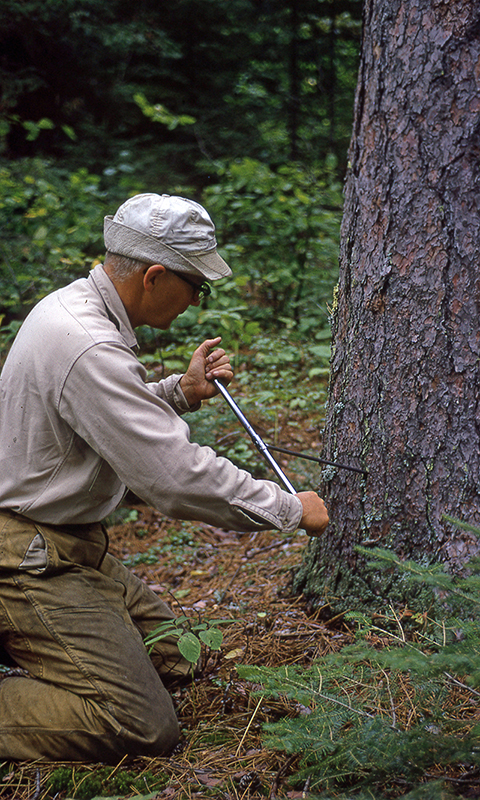
Figure 6 – Bud Heinselman, taking a tree core sample in the late 1960s, devoted much of his career to exploring the fire history of the Boundary Waters Canoe Area. Photo courtesy of Bob Lucas, Forest Service.
The Forest Service was more reluctant to change, but a band of heretics in the northern Rocky Mountains changed that (Smith 2014). In the early 1970s, the FS approved its first wilderness fire management plan, allowing naturally occurring fires to burn in an area of the Selway-Bitterroot Wilderness in Idaho. This was the FS’s first approved exception to the 10 a.m. (total suppression) rule. This controversial effort was initiated under the leadership of Bud Moore, who had recently been named head of Fire and Aviation Management for Region 1 of the FS. Moore had grown up traipsing across the Selway-Bitterroot country, spent 40 years fighting fire, and had come to see fire as a natural and necessary part of the wilderness landscape. In 1970, Moore and Bitterroot National Forest supervisor Orville Daniels decided to establish a fire management test area, the 66,000-acre (26,709-ha) White Cap drainage in the Selway-Bitterroot Wilderness. Forester Dave Aldrich and fire researcher Bob Mutch were selected to write the plan with a goal of restoring ecological processes to fire-dependent wilderness lands. Importantly, they took several years to develop the plan, conduct reconnaissance, and research and develop a monitoring program.
Dave Aldrich was a seasoned fire control expert. Bob Mutch, employed at the FS’s Northern Forest Fire Laboratory in Missoula, had published an influential paper hypothesizing that “fire-dependent plant communities burn more readily than nonfire-dependent communities because natural selection has favored development of characteristics that make them more flammable” (Mutch 1970, p. 1046). In addition to their own work, they contracted with University of Montana ecologist Jim Habeck to study the fire-dependent forest of the Selway-Bitterroot (Habeck and Mutch 1973) and enlisted fellow FS fire scientist Jim Brown to collect fuels data in the study area. In 1972, the first lightning-ignited fire was allowed to burn in the White Cap drainage, followed by several more fires in 1973, including the 1,200-acre (486-ha) Fitz Creek Fire. As Smith (2014, p. 11) notes, “The in-depth field evaluations of fuel and vegetation before and after fire exclusion, followed by inventories of conditions on the ground after fires were allowed to burn, provided researchers with some of the earliest detailed documentation of the effects of wildland fires in fire-dependent wilderness ecosystems. And that, in turn, helped influence both public opinion and public policy. Fires burned in the approved area without suppression and, contrary to the worst fears of many, the wilderness survived. Indeed, as vegetation and other studies documented over the years, the burned areas showed robust rejuvenation.”
Recreation and Social Science
In the years after the Wilderness Act passed, most of the scientists who specialized in wilderness, attended conferences, and wrote papers and books on the subject, were social scientists interested in recreation. However, prior to 1964, few social scientists had done research with implications for wilderness and its management. This at least partially reflects the fact that prior to passage of the Wilderness Act, social aspects of wilderness, including the type of experience it does and should provide, were undefined. In addition, the field of recreation science did not exist until the 1960s, when the problems associated with growing recreation use on public lands became widely recognized. Nevertheless, a few individuals and institutions deserve to be recognized as antecedents of wilderness recreation and social science.
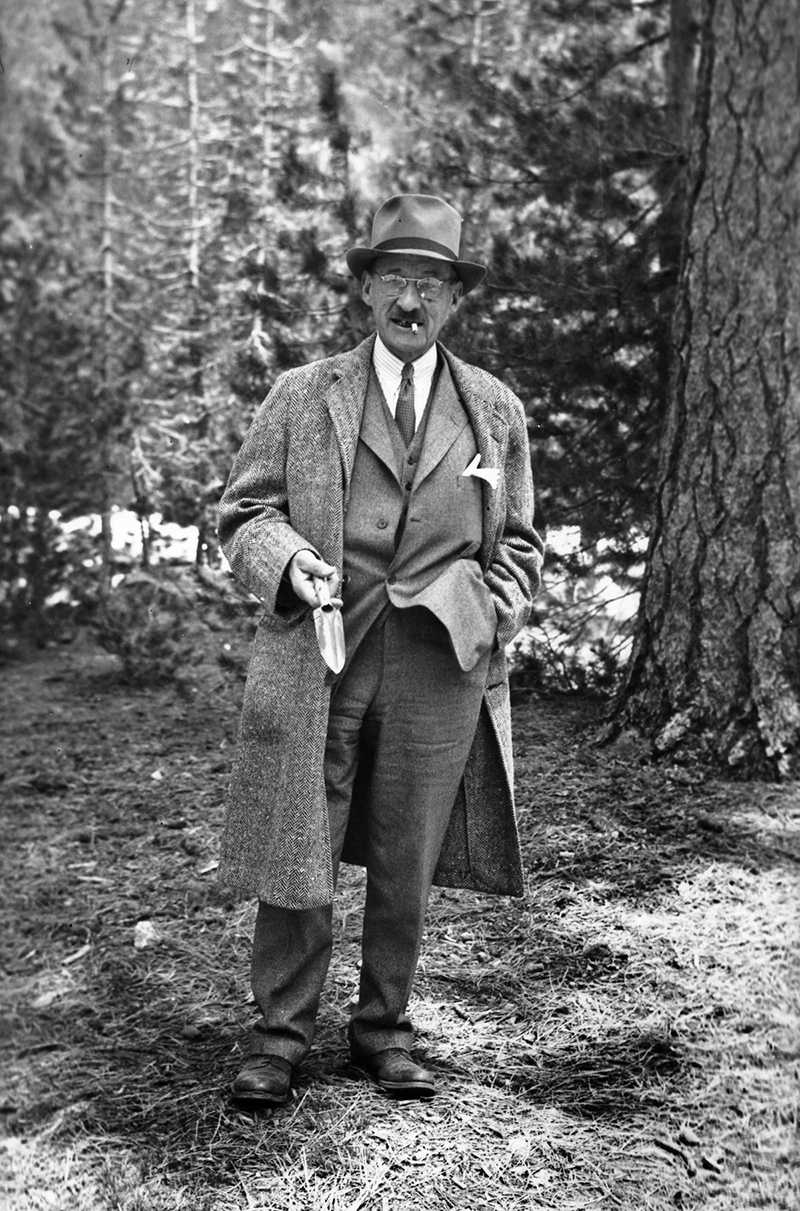
Figure 7 – “Doc” Meinecke, shown here around 1928, studied recreation impacts and devised campground management policies still in use today. Photo courtesy of National Park Service Historic Photograph Collection.
Pioneering recreation ecologist Emilio P. “Doc” Meinecke, a Bureau of Plant Industry pathologist, was asked in 1925 by the National Park Service to advise its employees on potential adverse impacts of camping and recreation on big trees in Sequoia National Park (Young 2014). Meinecke documented soil compaction and damage to tree roots that he felt would kill the big old trees. Following additional work on redwoods in the California state park system, Meinecke offered four recommendations for reducing the impacts of recreation –recommendations that have become fundamental tenets of good recreation management (Meinecke 1928). First, he advocated spatial segregation of conflicting park functions. The redwood and sequoia groves, iconic, symbolic, and of central interest to tourists, should be managed differently from other parts of the parks, free of commercial concessions and other artifacts. As Young (2014) notes, Meinecke felt this was at least as important to protecting the visitor experience and sense of place as it was to minimizing ecological impact. Second, he suggested locating the most impactful activities, notably camping, away from primary park attractions. Third, he recommended that use be concentrated on routes and sites designed to handle use, using naturalistic structures as much as possible, rather than fences and signs. Fourth, he recommended that trampled areas be restored to as natural a state as soon as possible (Young 2014). Meinecke’s observations and insights led him to write A Camp Ground Policy (Meinecke 1932), which promoted the need to confine most camping to planned campgrounds, carefully designed to concentrate use and impact and provide the illusion of a wild experience ¬ recommendations that remain fundamental to facility design today.
By the end of the 1930s, the Forest Service became increasingly concerned about proper management of burgeoning recreation use. In a progress report on recreation research, Lincoln Ellison, head of range research in the FS, recommended research in campground deterioration, roadside vegetation, and recreation economics (Ellison 1942). In a prescient essay, a forester noted the complexity of recreation research needs, stating that “Research must be pushed: research over the fields of economics, sociology, psychology, botany, ecology, pathology, and forestry; research to the end that people may use the forest for recreation permanently without hurting the forests and, ultimately, ourselves” (Lord 1940, p. 276).
Although it took another decade, the research branch of the FS became the first institution to devote significant resources to recreation research. In 1954, Assistant Forest Chief V. L. Harper, and Samuel Dana, dean emeritus of the School of Natural Resources at the University of Michigan, convinced the prestigious Forestry Research Advisory Committee to recommend development of a recreation research program within the FS. The program’s work was to be guided by a problem analysis written by Dana (Camp 1983). Two of the four highest-priority needs that Dana identified became major themes of early wilderness research: surveys of visitor attitudes and preferences and determination of the recreational carrying capacity (Dana 1957). The program was initiated in 1958, with most effort initially going into physical and biological concerns. However, George Jemison, deputy chief for research, was someone who “felt we ought to get into people-oriented research studies in recreation resource management rather than research only into physical resources” (Camp 1983, p. 6).
By the close of 1962, the FS recreation research program consisted of 15 full-time scientists and their summer field assistants. In addition, between 1962 and 1966, FS recreation research programs were co-located at five universities to promote the training of recreation researchers and managers (Camp 1983). Many of those involved in the establishment of a recreation research program worked primarily as facilitators and administrators, hiring scientists, planning research, and distributing funds to cooperating scientists. However, a number of the scientists first hired by the FS between 1959 and 1963 made major contributions to knowledge about recreation. Foremost among these, in terms of influence on wilderness science, was Bob Lucas. Hired in 1960 to work on recreation issues in the Great Lakes states, Lucas pioneered visitor survey research and became the founding project leader of the Wilderness Management Research Unit in 1967 (Cole 2019).
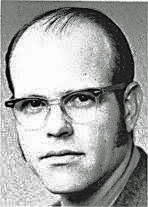
Figure 8 – Al Wagar, shown here around 1970 and one of the first FS recreation scientists, offered early insights into many fundamental recreation management concepts, from carrying capacity to the Recreation Opportunity Spectrum. Photo courtesy of the Forest Service.
Equally significant were the conceptual and theoretical contributions of Al Wagar, hired in 1959 as the FS’s first recreation researcher in the first Forest Recreation Research Center, Warren, Pennsylvania. Wagar’s first assignment was to study soil compaction in heavily used recreation areas and the success or failure of nine 20-year-old recreation facilities. Wagar made significant contributions to the field of recreation ecology, being among the first to conduct trampling experiments and to assess the efficacy of recreation site restoration efforts. However, it was his work on carrying capacity – one of Dana’s high priority research themes – and ultimately managing for quality in recreation, that make him such an important pioneer of recreation research. Among the ideas that came from his 1961 dissertation work (Wagar 1964) are: (1) carrying capacity is not an inherent property of a place or an absolute value, (2) it depends on the needs and values of people and can only be defined in relation to some management objective, and (3) carrying capacity can be increased through management actions such as zoning, engineering, persuasion, and the management of biotic communities (Cole 2001). He was among the first to stress the importance of providing for a diversity of recreation tastes (Wagar 1963) and that decisions about appropriate management – such as the need for use limits – must be made in a regional context. His argument was that the difference in quality between low- and high-density recreation would never be substantial and, therefore, “mass use would always appear to be justified (in terms of maximizing human benefits) if we examine one area at a time (Wagar 1974, p. 276). These ideas were the precursors for development of the Recreation Opportunity Spectrum (ROS) planning framework by Bev Driver, Perry Brown, Roger Clark, and George Stankey, some of them pioneering wilderness scientists.
Other early FS recreation scientists who did pioneering work include Elwood “Dick” Shafer whose exploration of diversity in tastes resulted in the classic The Average Camper Who Doesn’t Exist (Shafer 1969). Art Magill was among the first to measure campground impacts and trends (Magill 1970). Wiley Wenger (1964) did early work on effective ways to monitor visitor use, particularly in remote locations. Will LaPage did some recreation ecology work (1962). He also wrote about carrying capacity (LaPage 1963), anticipating subsequent empirical research and the Limits of Acceptable Change (LAC) planning framework, noting that the issue is one of quality vs. quantity, that the relation between use and experience quality may not be linear, and that managers must develop indicators and identify “critical levels” of satisfaction for the experience to be considered acceptable.
Cooperative units located at universities motivated those universities to augment their training efforts, recruit good students, and conduct significant research. Ross Tocher, for example, was a young professor at Utah State University where Al Wagar was located. With FS funding, Tocher began research projects there, some in wilderness, which he handed off to Perry Brown when he moved to the University of Michigan in 1965. Although Tocher’s published work is limited, he was an influential teacher and mentor. Two of the pioneering wilderness scientists of the 1970s, Perry Brown and Joe Roggenbuck specifically mention Tocher as guiding them toward a career in wilderness science. Another individual whose early written works on recreation were highly influential was Marion Clawson of Resources for the Future. In an early articulation of important recreation research needs, Clawson and Knetsch (1963) comment on the link between crowding and carrying capacity and observe that five phases of the recreation experience must be considered: (1) anticipation, (2) travel to, (3) on-site, (4) travel back, and (5) recollection.
Another important impetus to wilderness and recreation research was the work of the Outdoor Recreation Resources Review Commission (ORRRC). Established in 1958, ORRRC produced a main summary report in 1962, accompanied by 27 special study volumes, one devoted to wilderness. The Wildland Research Center at the University of California at Berkeley produced the wilderness report under the direction of James Gilligan, who had written a dissertation in 1954 on the evolution of FS wilderness policy. The report contains the results of surveys of visitors to seven wilderness areas in 1960, some of the earliest available information about wilderness visitors, the nature of their wilderness visits, psychological appeals and benefits of the wilderness experience, and attitudes toward wilderness management policies. Larry Merriam, one of the pioneering wilderness scientists of the 1960s, was involved with the survey conducted in the Bob Marshall Wilderness (Merriam 1986).
Conclusions
The first wilderness in the United States, the Gila, was established by the FS in 1924, and by the 1930s, the NPS was beginning to move toward conscientiously protecting wilderness-like qualities on many of their lands. However, it was not until the 1960s when burgeoning recreation use and passage of the Wilderness Act in the United States made it clear how unique wilderness qualities were and how challenging they would be to protect. This spurred a small cadre of scientists, first in government agencies and then in academia, to focus their research on wilderness – what it is, what benefits it provides, what threatens it, and how it might best be stewarded. A group of 12 scientists – each having received PhDs and beginning their wilderness work in the 1960s and 1970s – pioneered the scientific study of wilderness, as defined in the United States by the Wilderness Act. Each of these scientists was strongly influenced by pioneering community ecologists, NPS biologists, fire ecologists and/or recreation scientists. Biographical and bibliographic details, as well as oral interviews for most of them are available at Aldo Leopold Wilderness Research Institute (2019).
The earliest and, arguably, most influential pioneer of wilderness science was Bob Lucas, who began studying visitors to the wilderness of the BWCA around 1960 (Cole 2019). Lucas and his scientific contributions were a direct result of the FS effort to facilitate scientific input to recreation management on public lands. Another pioneer from the 1960s who came out of the nascent FS recreation research program was John Hendee. Hendee’s dissertation compared visitors to Pacific Northwest wilderness in the mid-1960s to car campers and national park, national forest, and state park visitors. He worked on wilderness issues for his entire career and, along with Bob Lucas and George Stankey, wrote the first textbook on wilderness management (Hendee et al. 1978).
As leader of an FS research group affiliated with the University of Minnesota, Bob Lucas financially supported early academic research on ecological impacts of recreation in wilderness by fellow wilderness scientists of the 1960s, Sid Frissell and Larry Merriam. Lucas hired Dave Lime to continue his work on BWCA wilderness visitors when he moved to Missoula in 1967 to lead the FS’s Wilderness Management Research Unit, the first research institution devoted exclusively to wilderness research (Cole 2019). There he facilitated the work of 1970s wilderness scientists, hiring George Stankey and David Cole at the Wilderness Management Research Unit and financially supporting academic research by Steve McCool, Perry Brown, and Joe Roggenbuck.
The careers and scientific contributions of NPS wilderness science pioneers Jan van Wagtendonk and Dave Parsons are a result of reinvigoration of NPS biology in the late 1960s. Each was hired in the early 1970s as research scientists at Yosemite and Sequoia and Kings Canyon National Parks, respectively, to improve the scientific basis for wilderness management. They were also strongly influenced by early fire ecologists and, to a lesser degree, early community ecologists.
The names of many of these wilderness pioneers – John Hendee, Bob Lucas, George Stankey, and others, as well as succeeding generations of wilderness scientists – are familiar to many in the wilderness community. Their studies and writings have profoundly influenced wilderness thinking and management. However, it is important to also recognize the contributions of those who laid the foundation for wilderness science, names less familiar to many—Victor Shelford, Joseph Grinnell, George Wright, Lowell Sumner, Harold Weaver, Harold Biswell, Bud Heinselman, Doc Meinecke, Al Wagar, and many others.
DAVID N. COLE is emeritus scientist with the Aldo Leopold Wilderness Research Institute. He retired in 2013 after a 35-year career as a wilderness scientist. Since his retirement he has been developing a History of Wilderness Science section on the Leopold Institute website, with interviews of pioneering wilderness scientists and papers documenting the history of wilderness science.
References
Adams, C. C. 1908. An Ecological Survey of Isle Royale, Lake Superior. Michigan State Biological Survey.
———. 1925. Ecological conditions in national forests and in national parks. The Scientific Monthly 20: 561–593.
Aldo Leopold Wilderness Research Institute. 2019. History of wilderness science: Pioneering wilderness scientists. Retrieved May 30, 2019, from https://leopold.wilderness.net/history-of-wilderness-science/pioneering-wilderness-scientists/default.php.
Biswell, H. H. 1967. The use of fire in wildlands management. In Natural Resources: Quality and Quantity, (pp. 71–87). Berkeley, CA.
Camp, H. W. 1983. An Historical Sketch of Recreation Research in the USDA Forest Service. Report PSW-H-1. Portland, OR: USDA Forest Service, Pacific Southwest Forest and Range Experiment Station.
Carle, D. 2002. Burning Questions: America’s Fight with Nature’s Fire. Westport, CT: Greenwood Publishing.
Chapman, H. H. 1912. Forest fires and forestry in the southern states. American Forests 18: 510–517.
Clawson, M., and J. L. Knetsch. 1963. Outdoor recreation research: Some concepts and suggested areas of study. Natural Resource Journal 3: 250–275.
Cole, D. N. 2001. Visitor use density and wilderness experiences: A historical review of research. In Visitor Use Density and Wilderness Experience Proceedings (pp. 11–20). Proceedings RMRS-P-20. Fort Collins, CO: USDA Forest Service, Rocky Mountain Research Station.
———. 2019. Pioneers of wilderness research: The Wilderness Management Research Unit. International Journal of Wilderness 25: 42–60.
Committee on the Preservation of Natural Conditions, Ecological Society of America. 1926. Naturalist’s Guide to the Americas. Baltimore, MD: The Williams and Wilkins Company.
Cooper, W. S. 1913. The climax forest of Isle Royale, Lake Superior, and its development. Botanical Gazette 55: 1–44.
———. 1923. The recent ecological history of Glacier Bay, Alaska. Ecology 4: 93–128.
Cowles, H. C. 1899. The Ecological Relations of the Vegetation on the Sand Dunes of Lake Michigan. Chicago: University of Chicago Press.
Croker, R. A. 1991. Pioneer Ecologist: The Life and Work of Victor Ernest Shelford, 1877–1968. Washington, DC: Smithsonian Institution Press.
Dana, S. L. 1957. Problem Analysis – Research in Forest Recreation. Washington, DC: USDA Forest Service.
Ellison, L. 1942. Trends of forest recreation in the United States. Journal of Forestry 40: 630–638.
Franklin, J. F., and C. T. Dyrness. 1969. Vegetation of Oregon and Washington. Research Paper PNW-80. Portland, OR: USDA Forest Service, Pacific Northwest Forest and Range Experiment Station.
Greene, S. W. 1931. The forest that fire made. American Forests 37: 583–584, 618.
Grinnell, H. W. 1940. Joseph Grinnell: 1877–1939. The Condor 42: 3–34.
Grinnell, J., and J. M. Linsdale. 1936. Vertebrate Animals of Point Lobos Reserve, 1934–35. Publication No. 481. Washington, DC: Carnegie Institute.
Grinnell, J., and T. I. Storer. 1916. Animal life as an asset in national parks. Science 44: 375–380.
Habeck, J. R., and R. Mutch. 1973. Fire-dependent forests in the Northern Rocky Mountains. Quaternary Research 3: 408–424.
Harper, R. M. 1913. A defense of forest fires. Literary Digest 47: 208.
Heinselman, M. L. 1973. Fire in the virgin forests of the Boundary Waters Canoe Area, Minnesota. Quaternary Research 3: 329–382.
Hendee, J. C., G. H. Stankey, and R. C. Lucas. 1978. Wilderness Management. Miscellaneous Publication No. 1365. Washington, DC: USDA Forest Service.
Heyward, F., and R. M. Barnette. 1934. Effect of frequent fires on chemical composition of forest soils in the longleaf pine region. Technical Bulletin 265. Gainesville, FL: Florida Agricultural Experiment Station.
Kendeigh, S. C. 1968. Victor Ernest Shelford eminent ecologist. Bulletin of the Ecological Society of America 49: 97–100.
Kilgore, B. M. 1972. Impact of prescribed burning on a sequoia-mixed-conifer forest. Proceedings Annual Tall Timbers Fire Ecology Conference 12: 345–375.
———. 1987. The role of fire in wilderness: A state-of-knowledge review. In Proceedings – National Wilderness Research Conference: Issues, State-of-Knowledge, Future Directions (pp. 70–103). General Technical Report INT-220. Ogden, UT: USDA Forest Service, Intermountain Research Station.
———. 2007. Origin and history of wildland fire use in the U.S. National Park Service. The George Wright Forum 24: 92–122.
LaPage, W. F. 1962. Recreation and the forest site. Journal of Forestry 60: 319–321.
LaPage, W. 1963. Some sociological aspects of forest recreation. Journal of Forestry 61: 32–36.
Lord, R., ed. 1940. Forest Outings by Thirty Foresters. Washington, DC: USDA Forest Service.
Magill, A. W. 1970. Five California Campgrounds… Conditions Improve After Five Years’ Recreation Use. Research Paper PSW-62. Berkeley, CA: USDA Forest Service, Pacific Southwest Forest and Range Experiment Station.
Meinecke, E. P. 1928. A Report Upon the Effect of Excessive Tourist Travel on the California Redwood Parks. Sacramento, CA: Division of Parks, State of California.
———. 1932. A Camp Ground Policy. Ogden, UT: USDA Forest Service.
Merriam, L. C. 1986. Nearly a quarter of a century in the Bob Marshall Wilderness (1960–1984). In Proceedings – National Wilderness Research Conference: Current Research (pp. 253–260). General Technical Report INT-212. Ogden, UT: USDA Forest Service, Intermountain Research Station.
Mitman, G. 1992. The State of Nature: Ecology, Community, and American Social Thought, 1900–1950. Chicago: University of Chicago Press.
Muller, C. H., J. T. Tanner, and A. A. Lindsey. 1978. Eminent Ecologist Award for 1978, S. Charles Kendeigh. Bulletin of the Ecological Society of America 59: 168–169.
Murie, A. 1940. Ecology of the Coyote in the Yellowstone. Fauna Series No. 4. Washington, DC: Government Printing Office.
———. 1944. The Wolves of Mt. McKinley. Fauna Series No. 5. Washington, DC: Government Printing Office.
Mutch, R. W. 1970. Wildland fires and ecosystems – a hypothesis. Ecology 51: 1046–1051.
Noss, R. 1999. Is there a special conservation biology? Ecography 22: 113–122.
Robertson, W. B., Jr. 1953. A survey of the effects of fire in Everglades National Park. Unpublished report, Everglades National Park, FL.
Rothman, H. K. 2007. Blazing Heritage: A History of Wildland Fire in the National Parks. New York: Oxford University Press.
Sears, P. B. 1964. Book reviews: Yesterday, today, tomorrow. Science 144: 401.
Sellars, R. W. 1997. Preserving Nature in the National Parks: A History. New Haven, CT: Yale University Press.
Shafer, E., Jr. 1969. The Average Camper Who Doesn’t Exist. Research Paper NE-142. Broomall, PA: USDA Forest Service, Northeastern Forest Experiment Station.
Shelford, V. E. 1963. The Ecology of North America. Champaign: University of Illinois Press.
Smith, D. 2014. From research to policy: The White Cap wilderness fire study. Forest History Today 20(1, 2): 4–12.
Stoddard, H. L. 1935. Use of controlled fire in southeastern upland game management. Journal of Forestry 33: 346–351.
Sumner, L. 1983. Biological research and management in the National Park Service. The George Wright Forum 3: 3–27.
Sumner, L., and R. M. Leonard. 1947. Protecting mountain meadows. Sierra Club Bulletin 32(5): 53–69.
Sutter, P. S. 2002. Driven Wild: How the Fight Against Automobiles Launched the Modern Wilderness Movement. Seattle: University of Washington Press.
Thompson, B. H. 1987. George Melendez Wright: A biographical sketch. The George Wright Forum 7: 3–8.
van Wagtendonk, J. W. 2014. Introduction to H. Weaver article. Fire Ecology 10: 1–2.
Wagar, J. A. 1963. Campgrounds for Many Tastes. Research Paper INT-6. Ogden, UT: USDA Forest Service, Intermountain Research Station.
———. 1964. The carrying capacity of wild lands for recreation. Forest Science Monograph 7. Washington, DC: Society of American Foresters.
———. 1974. Recreational carrying capacity reconsidered. Journal of Forestry 72: 274–278.
Weaver, H. 1943. Fire as an ecological and silvicultural factor in the ponderosa pine region of the Pacific slope. Journal of Forestry 41: 7–15.
Welles, R. E., and F. B. Welles. 1961. The Bighorn of Death Valley. Fauna Series No. 6. Washington, DC: Government Printing Office.
Wright, G. M., J. S. Dixon, and B. H. Thompson. 1933. A Preliminary Survey of Faunal Relations in National Parks. Fauna Series No. 1. Washington, DC: Government Printing Office.
Young, T. 2014. “Green and shady camps”: E. P. Meinecke and the restoration of America’s public campgrounds. The George Wright Forum 31: 69–76.
Read Next
Young Activists: Influencing the Climate Change Movement
As 2019 closes, it is noteworthy to recognize the influence and impact of Greta Thunberg, the Swedish climate activist.
The Cognitive Costs of Distracted Hiking
What do smartphones, global positioning systems, Spot Locator Beacons, navigation apps, and other technological innovations mean for the future of outdoor recreation, and, especially, the future of wilderness?
Second Class Wilderness: Separate but Unequal Air Resources in American Wilderness
The United States has a long history throughout which equitable access to resources has been denied to segments of the population along racial, ethnic, and socioeconomic distinctions through informal, legal, and sometimes violent means.


